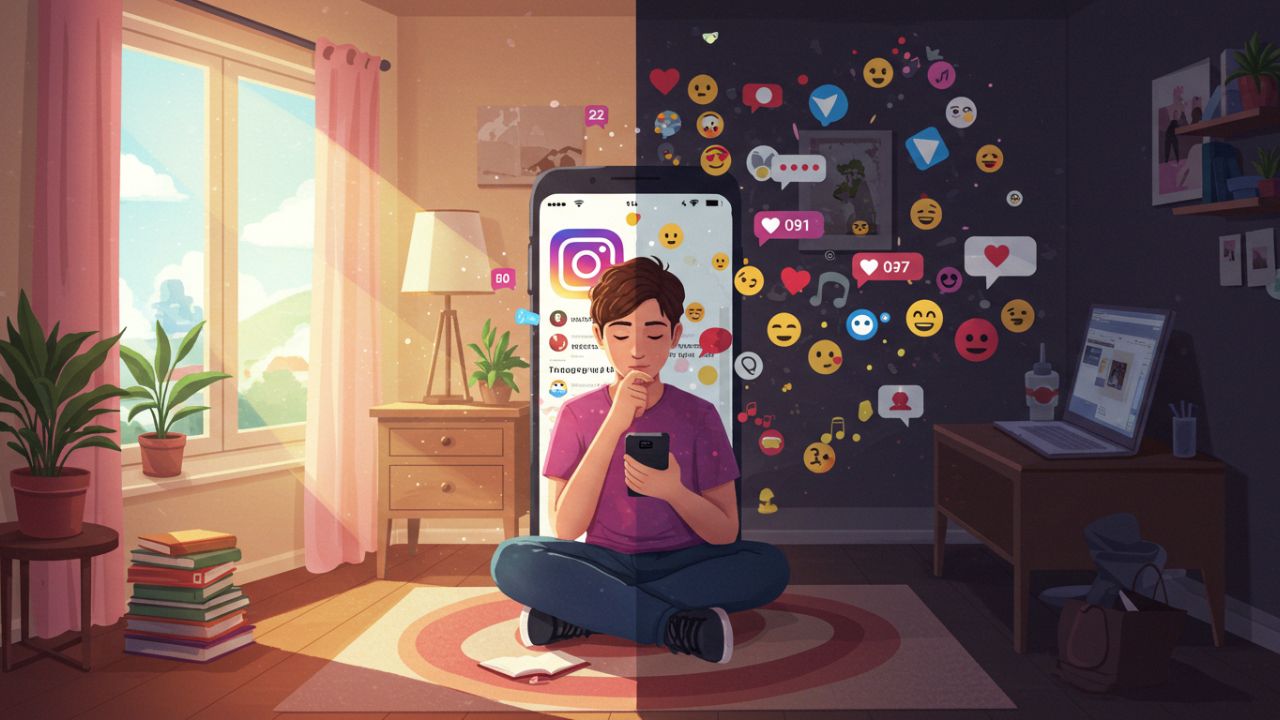In an era dominated by smartphones and social media platforms, Instagram stands out as one of the most popular and engaging apps in the world. With over two billion monthly active users, it’s no surprise that many people spend significant portions of their day scrolling, liking, sharing, and commenting. But with the rise in screen time comes an important question: how much time on Instagram per day is too much?
This article delves deep into the psychological, social, and health impacts of Instagram usage, and offers expert-backed guidance on setting healthy limits.
The Allure of Instagram
Instagram offers a potent mix of visual storytelling, social validation, and instant gratification. Features like Stories, Reels, and Explore keep users hooked through endless novelty and entertainment.
Why We Spend So Much Time on Instagram:
- Dopamine-driven Design: Likes, comments, and notifications stimulate the brain’s reward system.
- Social Comparison: Viewing curated lives of others fuels engagement.
- FOMO (Fear of Missing Out): The constant stream of updates makes it hard to disconnect.
- Micro-entertainment: Short videos and aesthetic content make quick breaks feel productive.
Average Time Spent on Instagram
According to recent reports, the average user spends 33 to 53 minutes per day on Instagram. For younger users aged 18–24, this number can exceed 2 hours daily.
| Age Group | Average Daily Time on Instagram |
|---|---|
| 13–17 | 45–90 minutes |
| 18–24 | 60–120 minutes |
| 25–34 | 45–90 minutes |
| 35–44 | 30–60 minutes |
| 45+ | 20–45 minutes |
While these numbers are averages, they don’t necessarily reflect what’s best for individual mental health and productivity.
Signs You’re Spending Too Much Time on Instagram
Overusing Instagram can have detrimental effects on mental, emotional, and physical health.
Red Flags Include:
- Checking Instagram within 5 minutes of waking up.
- Feeling anxious or restless when you can’t check the app.
- Comparing your life to others and feeling inadequate.
- Neglecting work, studies, or in-person relationships.
- Trouble sleeping due to late-night scrolling.
Mental Health Impacts
Instagram has been linked to both positive and negative mental health outcomes.
Positive Effects:
- Connecting with like-minded communities.
- Discovering new hobbies, ideas, or career opportunities.
- Receiving social support.
Negative Effects:
- Increased anxiety and depression, especially among teens.
- Body image issues and low self-esteem.
- Cyberbullying and social comparison fatigue.
- Sleep disturbance and reduced attention span.
Studies by institutions like the Royal Society for Public Health (UK) and the American Psychological Association highlight that high social media usage correlates with poor mental health outcomes in adolescents.
The Science of Digital Wellbeing
Digital Wellbeing refers to using technology in a way that supports mental and physical health. The goal is not necessarily to quit Instagram but to use it mindfully.
Best Practices for Digital Wellbeing:
- Set screen time limits.
- Disable non-essential notifications.
- Curate your feed to include only uplifting content.
- Practice digital detox days.
- Use Instagram’s own tools like “Your Activity” tracker.
How Much Time Is Healthy?
There’s no universal answer, but most experts agree:
- 15–30 minutes per day is a good target for casual users.
- 30–60 minutes per day may be acceptable for creators or business users.
- More than 90 minutes per day is likely excessive for most users.
Why These Limits?
- Prevent algorithm fatigue.
- Preserve attention for real-life tasks.
- Minimize exposure to negative social comparisons.
- Enhance sleep and reduce anxiety.
Tools for Managing Instagram Time
| Tool/Feature | Platform | Function |
| Screen Time | iOS | Monitors and limits app usage |
| Digital Wellbeing | Android | Offers app timers and focus mode |
| Forest | Android/iOS | Rewards staying off the phone with virtual trees |
| Freedom | Android/iOS/Desktop | Blocks distracting apps and websites |
| Instagram “Your Activity” | Tracks daily and weekly time spent |
How to Set Healthy Boundaries
- Audit Your Usage: Start by reviewing your Instagram screen time.
- Set App Limits: Use your device settings or third-party apps to enforce boundaries.
- Create Purposeful Sessions: Avoid mindless scrolling. Have a goal: post, check DMs, etc.
- Mute or Unfollow: Remove accounts that cause negative emotions or comparison.
- Schedule Detox Periods: Take breaks for a day, weekend, or week.
- Replace with Other Activities: Read, exercise, or spend time with loved ones.
Parental Guidance: Teens and Instagram
Parents must be especially mindful of their children’s Instagram habits. Teens are more susceptible to:
- Peer pressure
- Social anxiety
- Sleep disruption
- Identity development issues
Tips for Parents:
- Use parental controls to set daily limits.
- Talk openly about digital wellbeing.
- Encourage offline hobbies and family time.
- Model healthy behavior yourself.
Instagram’s Own Initiatives
Instagram has rolled out several features aimed at promoting healthy use:
- Daily Limit Reminder: Alerts you when you exceed your preset time.
- Take a Break: Encourages users to pause after prolonged usage.
- Hidden Like Counts: Reduces social pressure.
- Wellbeing Guides: Educational content about safe and mindful usage.
Final Thoughts
Instagram can be a fantastic tool for creativity, connection, and learning. But like any tool, it must be used wisely. Understanding the psychological hooks that keep us glued to the app is the first step toward reclaiming control over our digital lives.
A healthy relationship with Instagram is one where:
- You feel in control.
- You don’t compromise real-world responsibilities or relationships.
- Your self-esteem is not tied to likes and comments.
- You use the platform intentionally.
Challenge: Try a 7-Day Time Reset
For the next week, limit your Instagram use to 30 minutes per day. At the end of the week, reflect on:
- Your mood and energy levels
- Productivity
- Social connections
- Sleep quality
You might be surprised by the positive difference just a little boundary-setting can make.

Leave a Reply